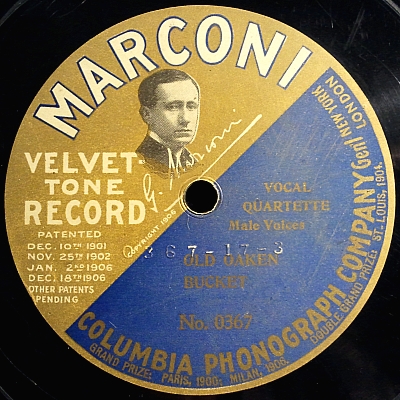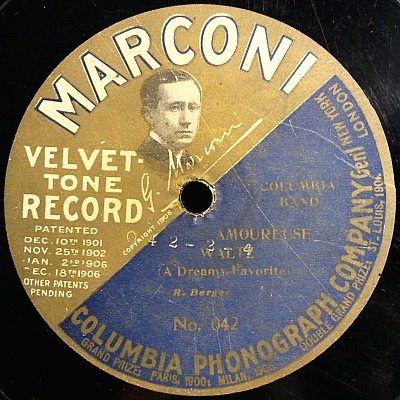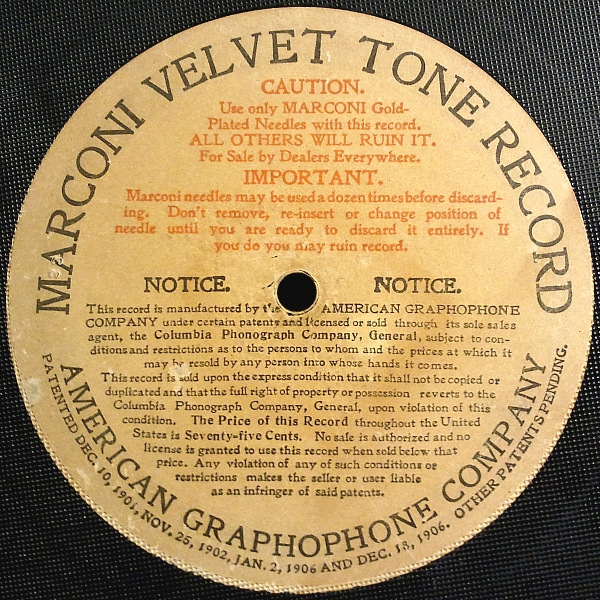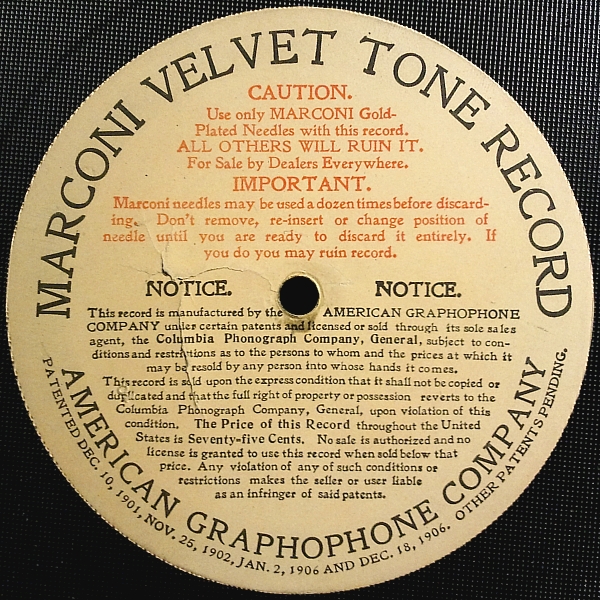

 |
 Larger Image |
| Amoureuse Waltz | (Blank) |
| Columbia Band | |
| Marconi 042 | |
| Matrix# (Columbia 1376) 042-2-4, Take 2 | |
| ca. 1903-1908 | |
| New York, New York | |
| Note: Rough start. Worn. |
 |
 Larger Image |
| Old Oaken Bucket | (Blank) |
| Columbia Quartette | |
| Marconi 0367 | |
| Matrix# (Columbia 521) 0367-17-3, Take 17 | |
| ca. 1902-1908 | |
| New York, New York | |
| Note: Rough and abrupt start (abrupt to exclude scratches). |